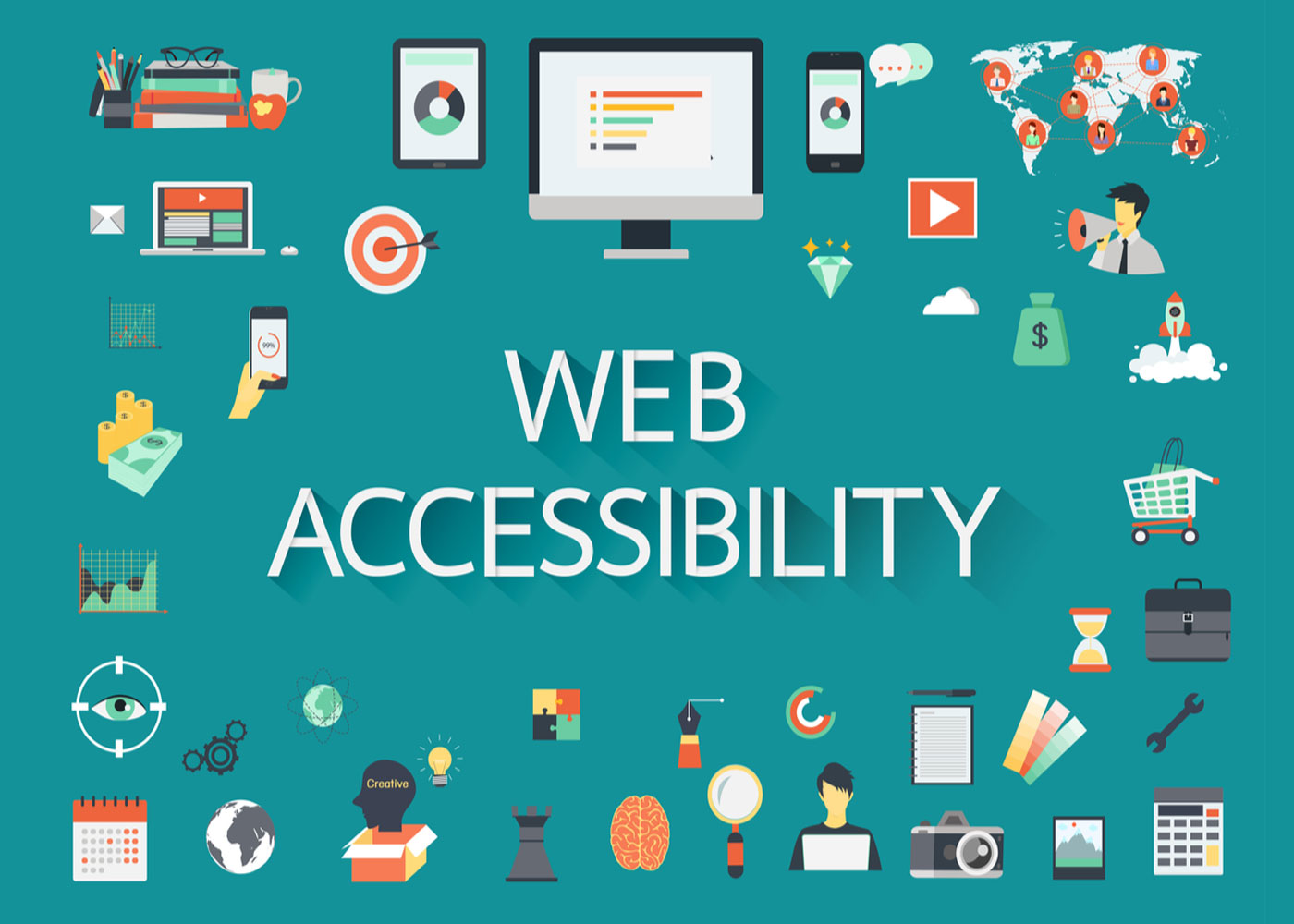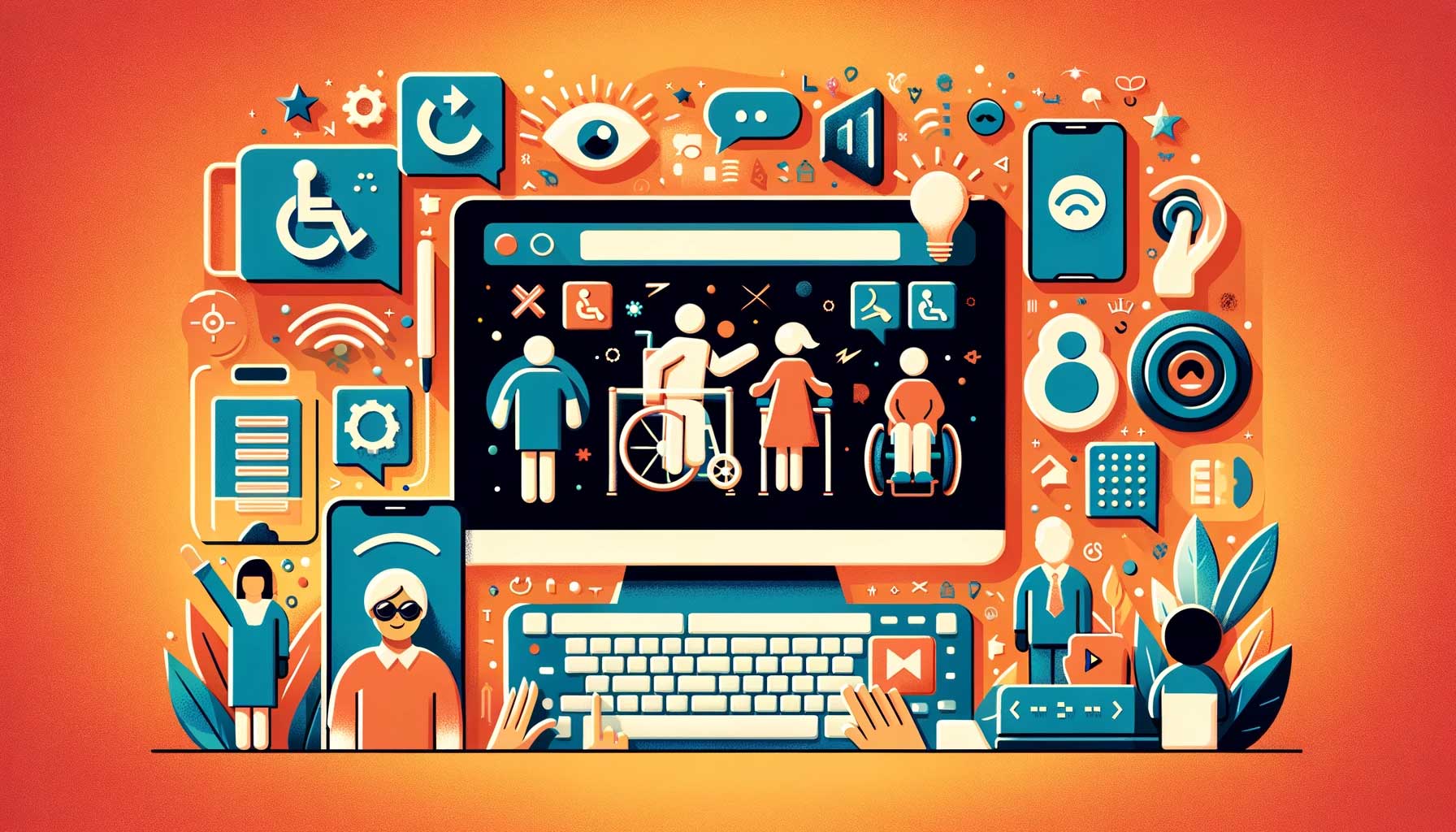Search
Category
- Website Design (240)
- Technology (135)
- Business (127)
- Digital Marketing (78)
- Seo (70)
- How To (46)
- Mobile Application (45)
- Software (34)
- Food (30)
- Guest Blog (27)
Similar Articles




A website that is accessible allows all users to use it whether they have disabilities or not. It includes people with visual, hearing, mobility, or cognitive difficulties. An accessible website means that all the users can make out the web pages, move about within the website, work with different functions, and contribute to the web.
Making the site friendly to all users is a challenging task that requires taking into account content, navigation, multimedia and forms. Content should be rather presented in a well-structured and short way with appropriate headings and descriptive links. Navigation should be user-friendly, and well-structured menus, with direct links, are useful for quick and easy access. Media and graphics should be labeled with alt text and captions, meanwhile, forms and inputs should be optimized for virtual keyboard usage and error handling.
These are the guidelines to follow to make your website accessible to everyone:
Before implementing any changes on your website, you should start with a complete accessibility audit. This process involves the application of various instruments and methods of analysis to baseline the present level of accessibility and pinpoint the areas that can be improved.
Choice of the proper design elements is a vital thing to do when implementing an accessible website. Be aware of color schemes, contrasts and typography, all of them for the sake that the readability and clarity of the site are guaranteed for all users.

Responsive design is of course one of the pivotal factors that will shape the look and the function of your website on different devices and on various screen sizes. Develop the layouts with the ability to be adjusted to fit different viewing situations.
A number of users have to use keyboard navigation to get to websites. Making sure that all the interactive features have keyboard accessibility enabled and people can navigate your site without the use of a mouse is crucial.
Alt text is a text description of visual images that are displayed to screen reader users who are not able to see them. Alt text provides more details beyond the image, so write descriptive ones which emphasize the purpose of the image and what it contains.

Subtitling videos and transcription of audio content give an opportunity to those who have hearing problems to be part of the learning process as well. Be sure that all multimedia materials are available to those with different abilities.
Use screen readers and other assistive technologies to test your website. It is to ensure compatibility and usability. Run usability tests with users who represent various ability levels to elicit feedback as well as to identify possible accessibility concerns.
Create forms that are simple to comprehend and ensure that buttons and links are easily recognizable and useable for any user.
Webpage loading speed can create problems when it comes to accessibility, especially for those with slow network connections. Be sure to optimize your website for fast performance to serve everyone regardless of their network speed.

Well-organized and intuitive navigation will allow the users to easily explore your website. Form user-friendly navigation menu and label each link with captions.
Write an accessibility statement which lists all features on the site that can accommodate users with accessibility issues and also offers some resources to cater to this group of users.
Accessibility is a dynamic process. Periodically check user responses and conduct some necessary modifications for the website to remain accessible to all.
The basic principle of web accessibility is accommodating all people. By integrating mechanisms like alternative text, tab-key navigation, and adjustable text sizes, you enable everyone to surf through your website, whether they are able-bodied or not. This at the same time enhances the ability to shop for the homeless but also provides them with a sense of belonging and worth.

Accessibility isn’t just about accommodating people with disabilities; rather it is about inviting a wide range of audience. Through the universal website accessibility, the elderly users, those with temporary disabilities, and individuals with the outdated technology or slow internet connections are all included to target the larger group. This goes beyond the immediate reach, and includes the possibility of higher engagement, as users are more likely to interact with information that is relevant to them.
The gain is not just from a humanitarian perspective but also from a tangible standpoint for search engine optimization (SEO). The search engines like Google put on top of the ranking those websites that are accessible and they also consider factors like the mobile-friendliness and page load speed. The more you improve accessibility, the better your website ranks on search engines and more people are able to find you through organic traffic.
In the current situation, standing out from the crowd is the most important thing to have success. When you take up this matter, you are declaring your brand as the one which values diversity and inclusiveness. Such will help to build positive reputation, customer loyalty, as well as give a competitive advantage to the companies that give accessibility issues a thought over those that do not.
Even though there exists a widespread misconception that integrating accessibility features is unaffordable, it is not the case. It is therefore crucial to note that some accessibility improvements, such as the use of semantic HTML markup and responsive design, are also the norms of modern web design practices. By investing in accessibility at the beginning you will avoid more expensive retrofits and ensure permanent savings.
Adjusting isn't only about complying but also about embracing innovation and creativity in the process of designing and creation. After all, when you decide to take on the challenge of ensuring that your website is accessible to everyone, you motivate people to think out of the box and come up with novel solutions that are not only beneficial to the disabled but can also lead to overall improvements.
This is achieved by the application of flexible design principles and adherence to accessibility standards. As a result, your website will remain relevant and usable for years after it was launched.
However, designing an accessible website is far beyond the compliance with regulations; it is just about giving everyone a feeling of inclusion and belonging through the online experience. Through adhering to the guidelines in this article, the user will be able to create a site that is useable by everyone regardless of their physical or mental condition.
Do you want to have a website that attracts attention and wows visitors? Then, we are prepared to assist! Contact us by clicking the button below to share your thoughts with us.
real-m2yo
Poland Web Designer (Wispaz Technologies) is a leading technology solutions provider dedicated to creating innovative applications that address the needs of corporate businesses and individuals.